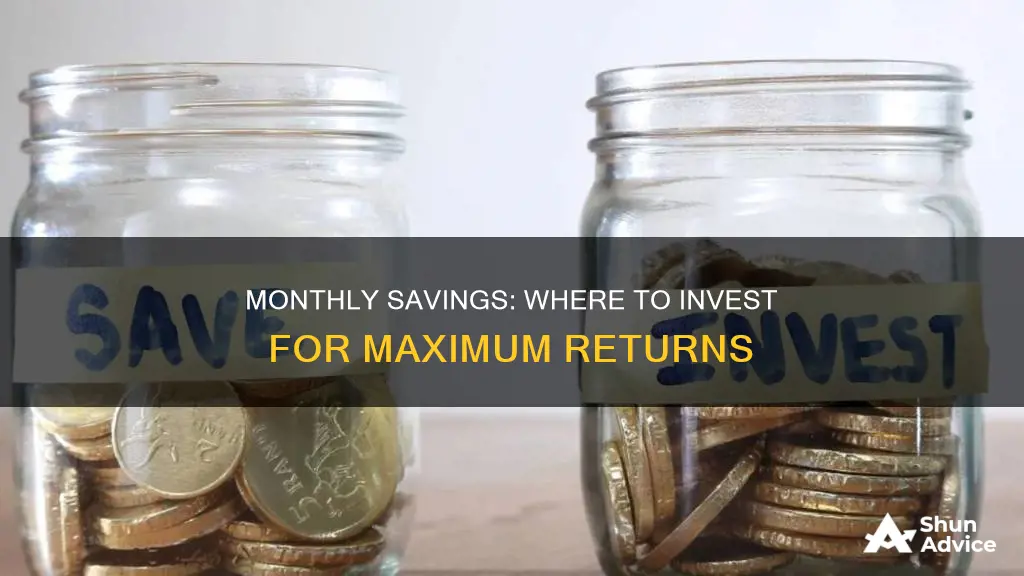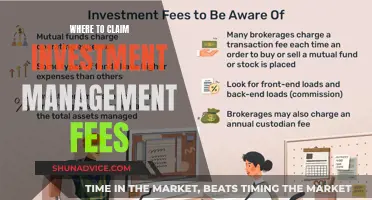
There are many options for investing your monthly savings, from lower-risk investments that pay a modest return to higher-risk, higher-return investments. The best option for you will depend on your financial goals, risk tolerance, and time horizon. Here are some of the most common options for investing your monthly savings:
- High-yield savings accounts: These accounts offer a higher interest rate than traditional savings accounts and are a good option for those who need access to their money in the near future or who want to avoid the risk of losing their investment.
- Certificates of deposit (CDs): CDs are a type of savings account that typically offers a higher interest rate, especially with larger and longer deposits. However, you will need to keep your money in the account for a specified period to avoid a penalty.
- Money market funds: These are mutual funds that invest in low-risk securities and typically provide returns similar to short-term interest rates. While they offer higher returns than savings accounts, they are not FDIC-insured.
- Stocks: Investing in stocks can offer higher potential returns but also comes with higher risk. It is important to diversify your portfolio and invest in a range of stocks to mitigate this risk.
- Bonds: Bonds are a lower-risk investment than stocks but typically offer lower returns. Government bonds are considered a safer investment, while corporate bonds offer higher yields but come with a higher risk of default.
- Mutual funds and exchange-traded funds (ETFs): These investment products pool money from multiple investors to purchase a diverse range of stocks, bonds, or other assets. They offer a convenient way to invest in the stock market while reducing risk through diversification.
| Characteristics | Values |
|---|---|
| Accessibility | High |
| Risk | Low to High |
| Returns | Low to High |
| Time Horizon | Short to Long-term |
| Knowledge Required | Low to High |
What You'll Learn

High-yield savings accounts
- Higher Interest Rates: They offer interest rates that are much higher than traditional savings accounts, allowing your savings to grow faster.
- Safety and Low Risk: High-yield savings accounts are FDIC-insured, which means your money is protected up to $250,000 per depositor, per bank. They are a low-risk option compared to investments such as stocks, where your money remains liquid and grows slowly with little to no associated risk.
- Accessibility: Online banking has expanded the variety and accessibility of high-yield savings accounts, making it easier to open and manage your account.
- No Minimum Balance Requirements: Many high-yield savings accounts do not have minimum balance requirements, so you can maintain a zero balance without incurring fees.
- Easy withdrawals: High-yield savings accounts typically allow for easy withdrawals, making them a good option for emergency funds.
When choosing a high-yield savings account, consider the interest rate, minimum opening deposit and balance requirements, monthly maintenance fees, mobile check deposit, and external transfer options. It is also important to ensure that the bank or credit union offering the account is FDIC-insured or NCUA-insured, so your deposits are protected.
- LendingClub Bank: 5.15% APY
- EverBank: 5.05% APY
- BrioDirect: 5.00% APY
- Bask Bank: 4.85% APY
- Popular Direct: 4.76% APY
- CIT Bank: 4.70% APY
- PNC Bank: 4.65% APY
- CIBC Bank USA: 4.61% APY
- UFB Direct: 4.57% APY
Unlocking the Power of Savings and Investments
You may want to see also

Certificates of Deposit (CDs)
With CDs, you can only deposit money once at the beginning of the term and you can't make additional contributions over the CD's term. There is also usually a minimum deposit requirement, usually $500 and up. You can't access your money before your term ends or you'll be charged an early withdrawal penalty fee. Popular CD maturity periods are six months, one year, and five years.
CDs are a good investment if you want a guaranteed return with zero risk and are happy to leave your funds untouched for a set period. They are one of the safest savings vehicles as your money is federally insured.
Labor-Saving Equipment: Worth the Investment for Automotive Division?
You may want to see also

Money market funds
Liquidity and Capital Preservation
Diversification and Yield
Regulation and Safety
Comparison with Other Options
Types of Money Market Funds
There are several types of money market funds, each investing in different securities while holding cash and cash equivalents:
- Government MMFs: Invest a majority of their assets in cash, government securities, or repurchase agreements backed by government securities.
- Short-term Credit (Prime) MMFs: Invest in government securities and securities issued by banks, corporations, and other non-government entities.
- Municipal MMFs: Invest in municipal bonds and other debt securities, offering potential tax benefits as earnings may be exempt from federal and state income taxes.
- Standard MMFs: Designed with a minimum investment horizon of three months, offering the potential for higher yields by holding less liquidity and slightly lower credit quality.
Considerations
While money market funds offer various benefits, there are some important considerations:
- Risk and Returns: Money market funds are considered low-risk, low-return investments. They are suitable for short-term goals but may not be ideal for long-term investment plans like retirement planning, as they offer little capital appreciation.
- Interest Rate Sensitivity: Money market funds are sensitive to interest rate fluctuations, which can impact their returns.
- Fees and Charges: While money market funds typically don't have entry or exit charges, investors should be aware of any management fees or other charges associated with the fund.
- Investment Horizon: These funds are best suited for short-term investment horizons, and individuals should consider their investment timelines before committing.
In conclusion, money market funds can be a viable option for investing monthly savings, offering liquidity, capital preservation, diversification, and the potential for modest returns. However, it's important to carefully consider the fund's specifics, associated risks, and how it aligns with your financial goals and risk tolerance.
Saving Plans: The Benefits of a Conservative Financial Strategy
You may want to see also

Treasury bills and notes
Treasury bills are short-term US government debt obligations with maturities of one year or less. They are usually sold in denominations of $100, with a minimum investment requirement of $100, and can be purchased directly from the US Treasury through the TreasuryDirect website.
Treasury notes have maturities of two, three, five, seven, and ten years and earn a fixed interest rate every six months. They are also available at a minimum purchase of $100.
Treasury bills are sold at a discount to their face value, or par value, and do not provide periodic interest payments. For example, a $1,000 bill might be purchased for $990; at maturity, it will be worth the full $1,000. The difference between the purchase price and the face value is the interest. Treasury notes, on the other hand, pay interest every six months and return the par value at maturity if purchased at a discount.
Monetary Policy: Investing and Saving Explained
You may want to see also

Dividend stocks
There are some downsides to investing in dividend stocks. Share prices can drop, tax rates on dividend stocks can rise, and there is less appreciation than with growth stocks. Dividend stocks may also signal a company's financial instability or limited cash reserves.
When investing in dividend stocks, there are a few important dates to keep in mind. The ex-dividend date is when the dividend eligibility expires, and if you buy shares on or after this date, you will not get the next dividend payment. The record date is the date you must own shares on or before to be entitled to the dividend. The payment date is when the company will make the dividend payment to shareholders, which may or may not be the date that the dividend arrives in your account.
If you're looking for a low-risk investment, dividend stocks may not be the best option. However, if you're willing to take on a little more risk, investing in dividend stocks can provide a steady income stream and help you achieve your financial goals.
Savings vs Investment: Imbalance and its Impact
You may want to see also
Frequently asked questions
Some safe, low-risk places to invest your money include savings accounts, certificates of deposit (CDs), money market funds, and treasury bills and notes. These options typically offer lower returns than higher-risk investments but provide more security for your money.
Higher-risk investments that may offer higher returns include stocks, corporate bonds, mutual funds, exchange-traded funds (ETFs), and real estate. These options carry a greater possibility of loss but also provide opportunities for more significant gains.
The decision between low-risk and high-risk investments depends on your financial goals, risk tolerance, time horizon, and investment knowledge. If you need your money in the short term or have a low-risk tolerance, low-risk investments are generally more suitable. If you are investing for the long term and can withstand potential losses, high-risk investments may provide greater returns over time.







